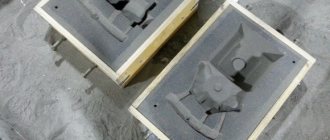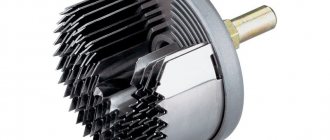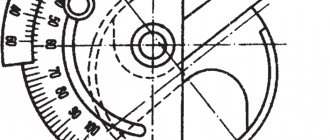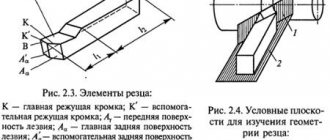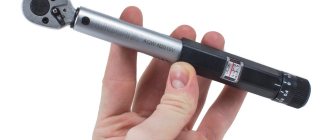Different types of tools are used for different purposes, including an axe.
The purpose of the ax varies depending on the type.
It will also have different parameters, sizes and shapes.
To choose the right tool for a specific job, it is worth studying its types.
The main components are the ax handle and the metal part, which has a blade and a butt.
How is it different from usual?
For example, carpenter's axes differ from taiga axes in the shape of the blade and the length of the handle.
The tasks that tools are supposed to perform are the opposite. With a carpenter's ax you need to cut as accurately as possible. The workers here are not known for their haste, since the main thing in the course of such work is to avoid mistakes. Commercial products or splitting axes perform another function - they quickly and deeply cut wood. The shape of the ax is made in such a way that it is possible to fell a tree faster than with a carpenter's tool with equal effort expended.
The carpenter's versions do not have a powerful groove - a protrusion under the ax handle, which prevents the handle from breaking due to vibration. This protrusion absorbs about 50% of the load. However, this groove will not save the handle if it breaks on a block. The carpenter's ax does not have a wide front. The blade of the commercial version is made at an angle. This allows the worker to use the tool as a cleaver. You just need to concentrate your energy on the right shot.
The ax handles of carpentry and trade tools differ in the angle of inclination. The first option has a smooth downward angle. The protruding edge of the ax is visible visually. The fishing gear simply does not have it. This very angle creates strong vibrations.
In addition to the blade, the carpenter's version also differs in its ax handle. Here it has an ovoid cross-section. The first half of the carpentry tool should not be very heavy and thin, otherwise it will quickly break. Aspen handles are considered to be of high quality. A good workpiece should be strong and light. It is recommended to treat homemade options not with varnish, but with drying oil. The varnished ones will slide and be cold.
Cleaver ax
This type of ax is designed for one purpose - splitting logs or cuttings of trunks when cutting firewood. The cleaver has a peculiar shape of a metal blade. In appearance, it resembles a drop from the end. That is, the blade of this ax expands very sharply to the place where the ax handle is inserted into the metal part. This was done so that during the process of chopping firewood, the blade works in the form of a wedge, pushing the wood fibers to the side, splitting the stump.
The cleaver is usually quite heavy, since the impact on the wood is not due to a sharp blow, but due to the force of inertia. To split a tree, it is enough to sharply lower the cleaver onto the stump, which, taking into account the mass of the ax, will split it quite easily. Cleavers usually have a long handle in order to increase the force of the blow. The handle of the cleaver is usually made of hard and tough wood: birch, maple, elm.
It is not recommended to use oak as a material for an axe. Due to its increased strength during operation, such an ax handle will “dry your hands.” That is, most of the energy from the blow will be transferred to your hands, due to which you will quickly get tired. If you are cutting stumps with a large number of knots, along with the cleaver you may also need wooden wedges that are hammered into the tree until it splits.
When choosing this tool in a store, we do not recommend being fooled by shiny, chrome-plated models with a plastic axe. A good old cleaver with a wooden ax and a forged metal part is better suited for chopping firewood, and is also significantly cheaper.
Main types of axes
There are a large number of different axes, but many of them have not been used for a long time.
Among the most famous are the following:
• Cleaver
- a massive tool designed for chopping wood.
It has a lot of weight (about 3 kg, sometimes there are 5 kg versions).
They work with two hands, so the handle is large and long.
• For felling wood
The largest ax is used.
The length of its handle is 90 cm, and its weight is no more than 3 kg.
• For chopping meat
A tool with a wide blade and a short handle is suitable.
With such a weapon it is easy to deliver precise strikes.
• Plotnitsky
The tool is sharpened to razor sharpness.
This is a lightweight tool that is used on a construction site during the construction of log houses.
• Ax-hoe
- an agricultural tool that resembles a hoe.
• Fire axe
The all-metal handle has rubber pads to prevent burns.
Used by rescuers and firefighters when carrying out fire extinguishing activities.
• Ice ax
– an ax is a special tool for breaking and chopping ice.
• Army or sapper ax
– small in shape and light in weight, has a transport case.
It can be done differently in different armies of the world.
• Roofing one-handed ax
- a special tool that builders use when arranging the roof.
On one side there is a narrow sharpened blade, on the other there is a hammer.
The tool helps to drive nails or cut down sheathing.
• Throwing
refers to military, hunting or sporting weapons.
Often used as interior decoration.
• Pickaxe
helps process stone or extract precious minerals.
• Tesla
used by builders when constructing a log house.
It has an unusual shape and is used for cutting a groove in wood.
• Tourist
- small ax - resembles an army ax, but is lighter in weight and has a universal purpose.
Cases are used for carrying.
• Kitchen
- assistant in cooking.
Made from stainless steel.
It will help cut bones and, if necessary, beat off meat.
• Axe-sledgehammer
allows it to be used for splitting large logs.
The butt can serve as a sledgehammer.
• Bearded ax
used in ancient times as a type of weapon.
In the modern world it often serves as interior decoration.
• Russian axe.
Its purpose has two directions: combat and for woodworking.
Today, stores offer a large number of varieties of axes.
They must be selected depending on the purpose of use.
Economic
This type of equipment has a universal purpose.
It is used in the household for chopping firewood, cutting wood, carpentry, and so on.
The blade is made of high-quality steel, which is not afraid of hard elements.
The cost of such a tool is low.
It is simply impossible to do without it on the farm.
Carpenter's ax
Such tools are sharpened at an angle of 35 degrees, otherwise the blade will get stuck in the wood.
The carpenter's ax has a rounded blade and an ax length of about 40 cm.
Weight is also an important parameter, which is about 1.5 kg.
Cleaver - ax for firewood
The peculiarity of this weapon is that its piercing part does not have a sharp edge, but has an impressive weight of about 2-3 kg.
The ax handle should be long – 80-90 cm.
A splitting ax can easily split a log or log.
They work with both hands.
The best ax for chopping wood
Mainly used for cutting logs, it has a hardened carbon steel blade. The handle of the tool is most often made of wood. The sharpening angle of the blade varies between 40-60 degrees.
Main advantages:
- ease of use:
- accessibility for the consumer;
- wide price range.
Minuses:
- very narrow specialization;
- There are a large number of low quality Chinese fakes on the building materials market.
The following stand out in this category:
- TUTAHI. The blade is sharpened for a specific type of wood and can easily be damaged if used for other purposes. It comes with a handmade leather case.
- KRAFTOOL Rhine. Its design can withstand increased daily loads. The blade is made of tool steel, and the handle is carved from hazel wood.
- KRAFTOOL is universal. It copes well with cutting wood and splitting firewood. Used as a professional tool for lumberjacks. The handle consists of two components, which prevents it from splitting during operation.
Rule 2: pay attention to the ax handle
First you need to decide which material will be preferable. Traditionally, the ax of the tool was made of wood, and today this material is the most popular. Most often, birch, oak, ash and other dense woods are used, which produce an elastic handle that can absorb shock.
When choosing an ax with a wooden hatchet, you need to pay attention to the direction of the fibers - they should run along. There should be no defects in the array, for example, traces of knots or cracks
This is a guarantee that the handle will withstand strong impacts and will not crack. The only drawback of such axes is that the handle may darken from dampness or dry out over time. Therefore, if you choose an ax to work in such conditions, it is better to give preference to a model with a handle treated with paint or varnish.
Metal axes are also available on the hand tool market. As a rule, the ax handle with the blade has an all-metal construction, so these products are very reliable. For a comfortable grip, the handle is equipped with a rubberized pad that prevents your hand from slipping during operation. But such instruments are slightly heavier than those with a wooden handle.
As for practical benefits, the use of fiberglass for the manufacture of impact instruments significantly improves the performance of products. In the event of a strong impact, such an ax will not only withstand a large mechanical load, but will also reduce the impact of vibration on the user’s hands. To prevent your hand from slipping, the handle may have a solid rubber pad or several corrugated rubber inserts.
When choosing an ax, also pay attention to the length of the handle. For tourist hatchets it is short - about 20 cm, which reduces the weight and makes the tool compact
It does not take up much space in your backpack, and can also be hung on your belt. For devices for chopping trees or splitting firewood, the length of the ax is from 35 to 50 cm. This ensures a good swing and allows you to strike with great force.
Expert advice: the optimal length of the ax is one that is 6-7 times the width of the butt. This ratio ensures that the swing is comfortable and that the design of the instrument can withstand heavy impacts.
In addition to strength and reliability, the ax handle should also be comfortable. It depends on its shape. Most tools have a curved handle to give your hand a secure grip.
Make sure that the handle is not too curved, otherwise this area will be most vulnerable to impact and the ax handle may crack.
The end of the handle is usually slightly widened so that the tool does not fall out of the hand if it accidentally slips. An additional guarantee that the ax will not fall out will be provided by the presence of a hole in the handle for threading a lace. By securing your wrist in the loop, you will be more confident that the risk of injury is minimal while working.
Ax device
The ax consists of two main parts:
- head;
- handle (axe).
The head, in turn, consists of:
- canvases;
- toe and heel (also called heel);
- blades;
- butt;
- cheeks and beards.
The ax handle can be divided into:
- eye;
- body;
- throat;
- tail.
The design of the instrument has not changed over time. The characteristics of individual elements influence the quality and method of work. For different purposes, you should select the appropriate ax parameters.
Ax device.
Working part
The working, metal part of the ax is called the head by professionals. One side is a sharp blade, the other is a butt. The top corner of the blade is the toe, and the bottom is the heel. In some models, the cheeks are highlighted - this is the side surface of the canvas.
The most important parameter of the head is the hardness of the metal. Made from medium-alloy tool steel that has undergone heat treatment.
The working part comes in three types:
- Extended. Designed for cutting wood or logs. A similar shape is found in felling or construction axes.
- Average. Used for cutting branches, trimming logs, cutting grooves. Gardening, hiking and carpentry axes are equipped with this type of head.
- Narrow. Used for chopping firewood, sharpening wedges, and preparing wood chips. An ax with a narrow working part is a cleaver.
The edge of the blade can be straight or rounded. In addition to the shape, the degree of sharpening is important. It all depends on the purpose of the tool.
Toporische
The ax handle or ax handle is the part that must withstand the impact and vibration after it.
- If we are talking about a wooden handle, then it is recommended to choose birch. It is light and stable. In addition to birch, species such as oak and ash are preferred.
- An important parameter for a wooden ax handle is the location of the fibers. It must be longitudinal.
- The ax handle should not contain any defects in the form of knots, cracks, or the like. Darkening from dampness or slight drying out is allowed.
- The most reliable, according to experts, are metal axes. Typically, this is a reliable all-metal construction. The handle is additionally rubberized, which ensures a secure grip.
- Many European manufacturers produce axes with fiberglass handles.
- Fiberglass has unique strength: it is not subject to rotting, corrosion, does not deform under mechanical stress, and does not react to aggressive environments. An ax with such an ax is easy to use - in case of a large impact, the material reduces the impact of vibration on the worker’s hands.
Battle axe.
How to sharpen an ax correctly
For comfortable work, it is important that the product is sharp. The sharpening procedure should be carried out regularly, since the tool becomes dull over time.
The sharpening procedure should be carried out regularly, since the tool becomes dull over time.
This can be done with a power tool or by hand using a sharpening stone, which provides greater sharpness.
However, there are types of tools that must remain blunt.
This applies to the cleaver and fire axe, otherwise it will get stuck in the wood.
Therefore, in order to understand how to sharpen an ax, you need to determine what type of product is used.
Choosing the right angle for sharpening is also an important point.
It is most often 20-30 degrees.
If you need a sharp blade, then a 35-degree angle is selected.
When sharpening, avoid overheating, otherwise the steel will soften and quickly wear out.
Mistakes during work are most often made not only due to the lack of the necessary skills, but also in a hurry.
When using a power tool, there is a high risk of overheating the metal, which changes its properties.
For an electric sharpener, you need to set the minimum speed and choose the most even circle.
The blade is held towards the rotation of the circle, and to avoid overheating it is periodically lowered into water.
Advice from professionals
Please pay attention to some simple tips when sharpening your tool:
• do not use a grinder for sharpening: it has high speeds, which will lead to overheating of the steel; • work slowly, in a calm rhythm; • use water for cooling; • set the power tool to low speed; • proper storage helps keep the blade sharp longer: it is better to put the product in a case made of thick fabric or leather; • to protect against corrosion, cover the metal part with oil and wax; • wear safety glasses and gloves to protect yourself while working; • a double-sided product is sharpened sharper on one side and thicker on the other, in order to be able to use it for different purposes.
Sharpening rules
For an ax to function properly, it must be sharpened regularly. Working with a blunt instrument is difficult and sometimes dangerous. However, there are certain models that do not need sharpening, for example, a cleaver or a fire ax.
When sharpening, several rules should be followed:
- Correct choice of the correct sharpening angle.
- To prevent the steel from softening, it is necessary to avoid overheating the head when sharpening.
- When sharpening on an electric sharpener, it is necessary to adjust the minimum speed and select the most even wheel.
- The head should be positioned towards the rotating circle.
- Do not use a grinder for sharpening. Due to high speeds, the steel may overheat.
- Use safety glasses and gloves to comply with safety precautions.
- A double-sided product should be sharpened on one side sharper and thicker on the other, this will allow it to be used universally.
The effectiveness of sharpening depends on the angle and shape given to the tip, as well as the sharpening method chosen.
The correct scheme for sharpening an ax.
Mechanical
Before starting work, you should prepare protective accessories from metal chips and dust. These include glasses, thick clothing, and a mask.
They sharpen an ax on an electric sharpener. An electric sharpener is an abrasive wheel that has a high rotation speed. To sharpen, follow these steps:
- Place the sharpening machine on a flat surface.
- Secure the axe. The tool should be positioned with its tip in the direction of rotation of the machine.
- Paint over the surface of the implement being processed with a marker.
- Bring the ax to the abrasive.
- Fix the desired angle with the nut and make several test turns of the circle.
- Check that the angle is set correctly. If the marker has been erased, then the setting is correct; if traces remain, then it should be continued.
- Sharpen until the flaws are completely eliminated, and you should regularly turn the head over, so the metal will be removed evenly.
- Chamfer. To do this, the product is rotated at an angle of 45 degrees.
- Repeat step 8 on the other side.
- After a certain time, a sharpener should be brought to the abrasive wheel, leveling the surface.
In this way, the ax is sharpened quickly and efficiently, but monitoring the temperature of the surface of the head is necessary. Otherwise the metal will overheat.
Manual method
When there is no equipment for sharpening, the head is sharpened by hand. A common method is a sharpener. It is placed between two bars, while holding the ax strictly vertically. The head is brought to the stone and moved along it.
The second method of manual sharpening is using a file . The work flow is as follows:
- Clean the head from rust and traces of corrosion.
- Polish it with sanding paper.
- Clamp the head in a vice or place it on a table.
- Use a file to sharpen the metal part of the ax to the width of the chamfer on both sides.
- Remove metal dust with a brush.
- Using a fine-grained sharpener, process the head. At the same time, do not forget to moisten the sharpener with water.
- Treat the surface of the head with an anti-corrosion and rust agent.
This method takes a lot of time, but the efficiency remains at the proper level. When working, be sure to remember and follow safety precautions.
Types and angles of sharpening an ax.
Main characteristics
The products differ from each other in characteristics, which include the following:
• Tool weight
Depending on the type and purpose of the weapon, the weight varies.
For splitting firewood or cutting wood, a heavier option is required, while for precision work, you will need a product that is small and easy to use with one hand.
• Blade shape and quality of steel for the ax
The higher quality the raw materials are used, the longer the tool will last.
It will also remain sharp longer and will not experience chips or mechanical damage.
• What shape is the ax handle made of?
Size and shape depend on operational purposes.
It is important that the handle fits comfortably in the hand and does not have any nicks or irregularities. • The method of attachment to the ax handle affects the service life and ease of use
• The method of attachment to the ax handle affects the service life and ease of use
An important part is the handle, which is made of different lengths depending on use. In order to get good impact force, you need to take a tool with an extended handle
In order to get good impact force, you need to take a tool with an extended handle.
A more accurate ax with a wooden hand will be if it is short.
Lumberjacks use an ax handle in the range of 70-90 cm in length.
An ax with a cranked handle is suitable for cutting branches.
It is more convenient to hew with a tool with a short handle.
The ax handle must be well processed and carefully polished.
Special models
To solve certain problems, separate versions of axes have been created. Let's look at them.
For felling forest
Axes that are used for felling trees are usually the longest - the minimum length of the ax handle is 90 cm, and the weight of the tool reaches 3-3.5 kg. Such a long handle allows you to provide the necessary parameters of swing and impact force, due to which wood harvesting work is carried out faster. It should be noted that working with such an ax is quite difficult, because this activity involves a lot of physical effort for woodcutters.
For chopping meat
Axes with a fairly wide and perfectly straight blade are most suitable for chopping meat. It is usually sharpened at an angle that protects the cutting edge from rapid destruction due to constant contact with hard, hard bones. The handle of this ax is usually short and extends down towards the cutting edge, which is why the device allows for very precise cutting blows.
Bilateral
Double-sided axes have found their use in cutting wooden blanks, preparing firewood and carrying out various installation works. The working part of such a tool has two blades; in most cases, they are made of forged steel using the double heat treatment method. The handle is made of hard wood, most often hazel.
Firefighter
Axes are widely used in the work of rescue services; in particular, firefighters use two types of axes - belt and assault. On the butt of the belt tool there is a rather sharp peg, which is necessary for knocking down locks and knocking out double-glazed windows. In addition, this hook can be driven into various surfaces to hold it in a wall or on a roof. Fire axes are typically painted black and red, although it is not uncommon to see yellow accents. The ax handle is covered with rubberized pads that protect your hands from burns. Unlike the belt models, the assault ones are much larger in size, but their shape is very similar.
The butt often has a hook, or can be flat, like a sledgehammer. This type of weapon is a mandatory component of any fire shield, which, according to safety standards, must be located in all public places.
Marching
The tourist ax is called a multitool and has a wide variety of models. Their distinctive feature is their light weight, which is not surprising, given that the instrument has to be carried on your back for many hours. The handle of such an ax usually becomes a rather convenient storage for various small things that are necessary on any hike. With the help of a tourist ax, various branches are cut, small trees are felled, and even stones are split to create a fireplace. They are usually equipped with covers that protect a person from injury while carrying the instrument.
They are quite compact and lightweight devices, which are necessary for cutting into the thickness of the ice if climbing to snow-capped peaks takes place. This climbing equipment is made double-sided, with one part resembling a well-sharpened hook, and instead of a butt, there is a sharp blade placed perpendicular to the handle - this structure is optimal for forming a depression in the ice. An army ax can also come in handy on a hike. It is widely used to prepare logs for the fireplace, dig trenches, hammer in tent pegs, and also as a weapon of defense.
To learn how to choose the right axe, watch the video below.
Different types of tools are used for different purposes, including an axe.
The purpose of the ax varies depending on the type.
It will also have different parameters, sizes and shapes.
To choose the right tool for a specific job, it is worth studying its types.
The main components are the ax handle and the metal part, which has a blade and a butt.
How to choose an ax?
For a long time in Rus', any man had to be able to wield an ax; each owner had his own tool, the handle of which was like an extension of the hand. Modern axes that are easy to use are made from high-quality materials
You should choose your tool carefully and pay attention to details
The weight of the product plays an important role
When choosing Finnish axes and other professional models, you should pay attention to tools weighing from 2 to 2.5 kg. Lighter axes are inconvenient to use, and heavier axes strain your hands.
The type of ax blade depends on the composition of the wood with which the master will work.
The length of the handle is an important parameter on which the impact force when working with an ax depends.
Ax size
The parameters of axes differ depending on their purpose and type. The shape of the blade, the length of the ax and the weight of the tool vary. Standard axes for chopping wood are considered large models; the length of the handle can range from 70 to 100 cm, the thickness of the blade is from 3 to 8 cm, and the weight is from 3.5 to 6 kg. Typical ax models have other characteristics:
- ax length: from 40 to 65 cm;
- sharp edge size: from 10 to 17 cm;
- size of the blunt part: from 4.5 to 7 cm;
- ax height: from 16.5 to 22 cm;
- size of the sharpened part: from 1.4 to 2 cm;
- weight: from 0.7 to 1.6 kg.
Ax blade shape
In home tool stores you can find axes with several types of shafts - wide, which is used for cutting wood, medium, which is considered universal, and narrow, intended for carpentry. The shape of the blade of a large ax can be different:
- Direct
sharpening is necessary for tools used to trim logs and split firewood. - Razor
sharpening is suitable for axes used for shaped cutting. - Oval
- ideal for meat axes used to chop bones; with this sharpening the blade does not get stuck in hard structures. This type of sharpening is good for small carpenter's axes.
Ax blade material
The question of which steel to choose an ax from is one that all craftsmen ask. Axes made of alloy steel are considered the most durable, followed by carbon blades in terms of properties. Alloy alloys, widely used for the manufacture of axes, are currently inferior to modern materials. Weak metals require frequent sharpening; such a tool will last less. When choosing a Scandinavian axe, experts advise hitting something metal with the blade and listening. A clear sound characterizes a quality product.
Ax handle
Axes with a wooden handle have proven themselves to work best. Such instruments experience strong vibration, which is transmitted to the hands. An ax handle made of metal or plastic does not extinguish it, and it is more difficult to work with tourist axes of this type. Birch exhibits the optimal balance of hardness and strength. After several years of use, the tree dries out. You can combat this by placing the ax in water, or purchasing a model treated with paint or varnish. The advantages of non-wooden handles are undeniable, such axes:
- do not rot;
- do not crack;
- do not burn;
- fits comfortably in the hand;
- do not slip thanks to rubber pads.
Best carpenter's ax
The ideal carpentry tool has a medium-thick blade and an ergonomic wooden handle. Professional carpenters sharpen a straight blade based on their personal preference.
Main advantages:
- well balanced;
- has a sharp blade;
- The blade is fixed to the ax handle in several ways, which prevents unexpected injuries.
Minuses:
- not suitable for chopping wood;
- After purchase, you have to sharpen it “for yourself.”
Best models:
- Gardena 1000A 08714-48.000.00. This is the most powerful model. It features a special blade coating that reduces friction with wood and makes work easier. The tool handle is reinforced with fiberglass and perfectly balanced.
- Izhevsk carpenter's axe. This tool can rightfully be called the highest quality among all. For the semicircular blade, a special steel with a high degree of hardening was used. The handle is made of birch and carefully polished.
- Small Norwegian axe. The Norwegian model is the most unusual. It is only suitable for the construction of wooden houses using Canadian technology. Its weight is just over two kilograms, and the durable blade has rounded edges.
- Wetterlings Hjartum Carpenter's Axe. This is the most legendary and famous carpentry model. Its history goes back more than 100 years. The tool has an alloy steel blade with a cutout at the base, allowing you to comfortably hold it while working.
Best travel ax
Typically very light weight and compact in size. The blade of such a hatchet may have semicircular edges to make it easier to carry in a backpack
Most often, manufacturers pay special attention to the design of such an instrument and always provide it with a case.
Main advantages:
- a light weight;
- The instrument is equipped with a protective cover;
- a sharp blade that allows you to use the tool as a knife;
- handle length no more than 50 cm.
Minuses:
- high price (usually significantly above average);
- rust on the blade (after long use the blade becomes covered with a layer of rust, especially after being in the case for a long time);
- not suitable for cutting firewood and logs.
Best models:
- Geter Gator II. It easily wins in the “price-quality” category, it has a low cost, compact size and a comfortable fiberglass handle. The Geter Gator II meets all the requirements for a touring tool.
- Expedition NV-040. It can rightfully be called the most functional among all its brothers. The manufacturer has equipped it with a straight blade and a bright handle to make it easier to find the tool in the forest.
The light weight, just over a kilogram, will not weigh down your travel backpack, and the plastic handle with a rubber lining will make the ax as safe as possible when chopping branches.
STAYER Taiga. The lightest of the touring models. It has a rounded blade and weighs 800 grams. It has a wooden handle, which is not very convenient during long hiking trips.
The best ax for chopping meat
This type is designed for chopping meat and bones. At home, it can be replaced with a regular multifunctional one, but professional butchers cannot do without such a tool.
It is ideal for chopping carcasses in cafes and restaurants. Only a man can cope with it.
A professional product for chopping meat has considerable weight, a wide blade and high density steel (large manufacturers use alloy steel). The ax handle is most often made of wood.
Main advantages:
- heavy weight makes it easy to cut the most stubborn material;
- the blade is sharpened at an acute angle, which makes working with meat carcasses easier;
- high safety margin;
- durable.
Minuses:
- classic weight of more than 3 kilograms requires the use of great physical strength;
- A wooden ax handle dries out over time.
Model rating:
- “Meat Chopper.” Most popular among butchers. The tool has a forged blade made of high-strength steel, which eliminates the appearance of chips and scratches. The handle is coated with a layer of varnish that provides protection from premature drying.
- "Butcher". It can be considered one of the easiest. The average weight is just over 2 kilograms, the blade is semicircular and has an anti-corrosion coating.
- “Labor” VACHA S901. It has no competitors in the “most proven model” category. The manufacturer has been producing it virtually unchanged since 1950. The ax has a wooden handle and a forged blade with high quality steel.
Ax blade
The quality of the ax blade is an important point, since poor steel will quickly become dull and dull. Checking the material is very simple - click your finger or a hard object on the blade. A dull ringing that quickly fades is a clear sign of a low-quality instrument. A clear, resonant sound will indicate good carbon steel. To improve performance, the blade is double hardened, forged and ground. The cutting edge of advanced axes has a special coating - it allows you to work with the tool longer without sharpening. A good ax is easily removed from a log when splitting, and it is easy to sharpen.
Video on how to choose an ax
When choosing an ax, first of all you need to decide on the type of tool
This will determine a number of characteristics that you should pay attention to when purchasing.
The weight of the tool is important. A heavy ax will cut logs well, but it is impossible to work with it for a long time
Low weight will require great human effort with little impact force.
The choice of ax depends only on the personal preferences of the buyer. Plastic handles are no less durable than traditional wooden handles. And the iron ax handle with a rubberized handle, despite its serious weight, is quite convenient to use.
Important parameters
When choosing a tool, special attention should be paid to the following points:
- Blade shape. It can be rounded or straight. The rounded shape allows you to focus on cutting qualities. The second option is more suitable for splitting wood.
- Sharpening the blade. A sharpening angle of less than 40 degrees allows the ax to penetrate deeper into the material. These tools are ideal for cutting down trees, but will become dull very quickly.
Many people prefer combined sharpening, when the edges are blunter compared to the center of the blade.
This significantly increases the strength of the tool, especially in cases where the impact force is transferred to the edge of the blade.
- Steel quality. First of all, it affects the durability of the tool. The branded head must have a stamp indicating the grade of tool steel. Preference should always be given to a forged product.
- Ax length. The short handle forces you to work with outstretched arms to increase swing strength. Recoil to the hand in this case will interfere with long and productive work.
The ideal ax handle should match the length of the arm from the shoulder joint to the wrist. This tool is very easy and comfortable to work with.
Thickness of the axe. The ax handle should fit comfortably in your hand. If your fingers do not close around it, then you can definitely prepare for injuries during work.
- Place of purchase. Often, tools in large construction stores are more expensive than in the markets. Although this does not affect the quality in any way. The difference in prices for tools from the same manufacturer can be 15-20%.
- Tool price. If the owner of an ax plans to use it almost every day, then you should think about buying a good and expensive tool that will quickly pay for itself.
But if you plan to use it occasionally, then buying an expensive model is not advisable.
How to properly place an ax on an ax handle?
It happens that an ax breaks during work; the most common problem that craftsmen encounter is the iron part coming off the handle. In this case, it is necessary to understand how to place an ax on an ax handle so that a similar situation does not happen again. Following the step-by-step instructions will help you avoid problems when assembling the tool.
- To install the attachment correctly, you need to adjust the eyelet on the blade to the size of the upper part of the tool's axe.
- On the handle you need to make a mark where the lower part of the blade ends, divide the resulting segment into two parts and draw a line.
- Using a hacksaw for metal, make a vertical cut to the mark; this is necessary to make a wedge, which is planed separately, its length should be equal to the depth of the cut, its width should be the size of the eye, and its thickness should be no more than 10 cm.
- The piercing part must be placed upside down on a wooden surface, insert the handle and tap it until it stops.
- The last step is to insert the wedge and cut off the protruding notches.
An instrument with history: up to the present time
The ancient stone ax was very heavy, inconvenient and fragile. Of course, our ancestors could not do without it, because they had to build a house, cut down a hunting club, kill a mammoth, and then butcher it, and drive away the predator from its prey. Such a tool often broke and was short-lived. They began to polish it only during the Neolithic period, then they began to make it from copper, and when iron was discovered, a brother of our modern instrument appeared - an iron one with a wooden handle.
The main part of this tool was an iron chopper mounted on a strong hewn stick. But gradually the axes were divided according to their purpose, and heavier examples with a sharpened ax turned into military weapons, which, due to their cheapness and excellent chopping power, became the main weapon of the militia. For some time, such axes were the main type of hand-held bladed weapon, but today they are no longer used in this capacity.




